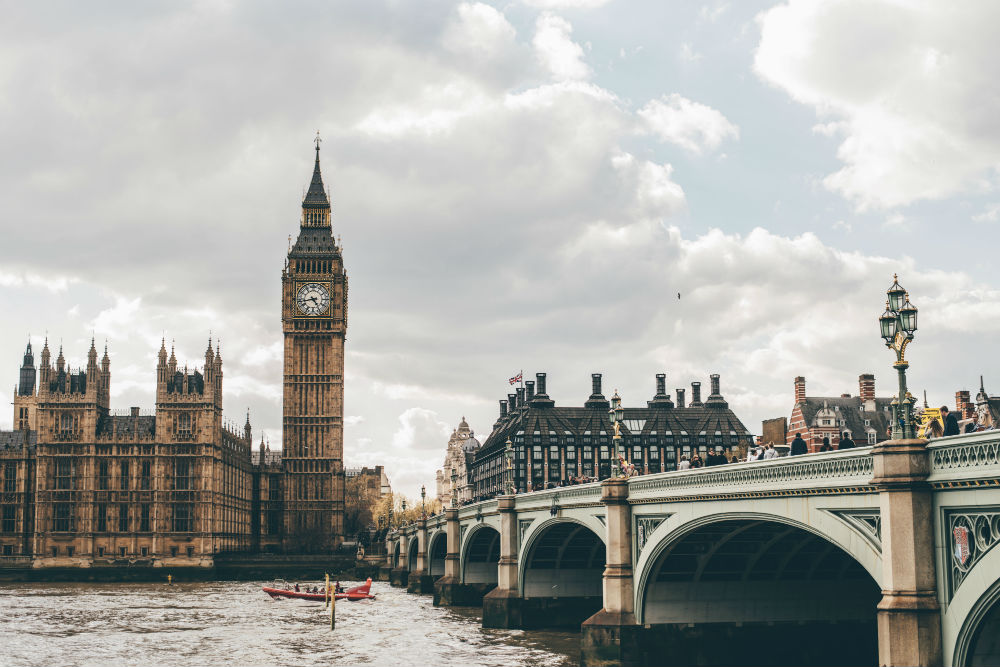In 2018, London Mayor Sadiq Khan released a London Environment Strategy to make the capital the greenest global city.
The manifesto set out a strategy to improve pollution, reduce waste and tackle climate change by 2050.
Targets in the plan included London become a zero-carbon city and at least 50% green over the following 32 years. Ways of encouraging this change include:
- Increasing the capital’s green cover
- Cleaner transport
- Clean energy
- Increasing recycling efforts
Climate change has been thrust further into the media spotlight recently, with 16 year old Greta Thunberg’s honest and emotional speech at the United Nations Climate Action Summit going viral.

Awareness on climate change has spread and even those who were uneducated on the matter are becoming more and more involved with personal efforts to reduce their impact on the world.
London already has some tactics in place, such as the ultra-low emission zone and the Cleaner Heat Cashback scheme which helps SMEs switch to renewable energy.
The city is also one of the C40 group of cities who pledge to reduce emissions by 60% with 2025 as the deadline.
However, with London being one of the most polluted cities in the world many are asking what they can do to make a change.
London’s best cycling neighbourhoods
By 2024 London aims to have 450km of Cycleways installed across the city. This means that 28% of Londoners will live within 400 meters of a brand of the cycle network.
Currently Hackney boasts the highest number of people who commute by bike, with 15% of the population favouring two wheels instead of hopping on the underground or a bus.
The city is already home to a number of different cycling routes known as Quietways and Cycleways. However, a further two – Cycleway 4 and Cycleway 9 – are being installed.
Cycleway 4, once finished in 2020, will provide clearer and safer routes for cycling in Bermondsey, Rotherhithe, Deptford and Greenwich.
Cycleway 9 proposed to tackle roads in west Kensington, Hammersmith, Chiswick and Brentford town centre. Other routes being considered include:
- Camden to Tottenham Hale
- Lea Bridge to Dalston
- Hackney to the Isle of Dogs
- Ilford to Barking Riverside
Living in one of the current or proposed Cycleway locations would give Londoner’s an option of decreasing their personal carbon footprints.
Opting to cycle instead of utilising public transport takes a commuter’s carbon emissions to zero for travel.
Solar schools in London
10:10 began in 2009 and aimed to unite the UK in cutting carbon emissions by 10% by 2010. Positive progress was made in the first 12 months, with business, families and schools getting involved.
The government even did their bit, cutting departmental footprints by 100,000 tonnes. By 2011 things had expanded and there were people making a difference in 128 counties.
Solar Schools was a project funded with clean energy crowdfunding. In just five years 80 schools had crowdfunded £723,000 which led to the installation of 2370 solar panels.
Similarly, The School’s Energy Co-Operative crowdfunded a similar project that is still ongoing, with a 12th London school in Ealing installing solar panels earlier this year. Other locations include:
- Greenford
- Gospel Oak
- Tufnell Park
- Norholt
- Southall
Moving to London
For those wanting to move to the city but are concerned about their impact on carbon emissions the locations detailed above would be contenders.
However, utilising a London property map and searching for areas close to a potential place of work or near one of London’s lush green parks could be an avenue to explore.
Yet, no matter where you live in the capital, there are countless ways how you can cut down your carbon footprint at home and work.